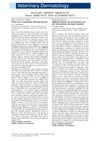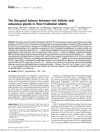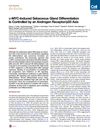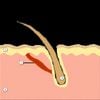Search
forLearn
3 / 3 resultslearn Verteporfin
chemical that might completely regrow follicles from hair transplant extractions
learn Hair Multiplication
extract, clone, and reinsert your own hair cells
Research
5 / 1000+ results
research Abstracts
New treatments and diagnostic methods for various animal skin conditions showed promising results.
research Genetic Insights Into Acne, Androgenetic Alopecia, And Alopecia Areata: Implications For Mechanisms And Precision Dermatology
Genetic insights can lead to personalized treatments for acne, androgenetic alopecia, and alopecia areata.
research Precision Dermatology: A Review of Molecular Biomarkers and Personalized Therapies
Personalized medicine in dermatology uses molecular biomarkers to improve diagnosis and treatment but needs further advancements for practical use.

research The Disrupted Balance Between Hair Follicles and Sebaceous Glands in Hoxc13-Ablated Rabbits
Rabbits lacking the Hoxc13 gene show similar hair and skin issues to humans with ECTD-9, making them good for research on this condition.

research C-MYC-Induced Sebaceous Gland Differentiation Is Controlled by an Androgen Receptor/p53 Axis
The balance between androgen receptor and p53 is crucial for sebaceous gland differentiation.
Community Join
5 / 92 resultscommunity You will lose hair if your prostaglandins aren't in balance
Prostaglandin balance affects hair loss, particularly in conditions like Lichen Planopilaris, where an imbalance can lead to hair follicle damage. Treatments mentioned include prostaglandin analogs and Pioglitazone HCL, with a focus on maintaining prostaglandin equilibrium for potential hair regrowth.
community Androgenetic alopecia is a skin disease: DHT-mediated skin disorders
Dihydrotestosterone (DHT) impacts various skin conditions, including Androgenetic alopecia and seborrheic dermatitis, by causing overactivity in sebaceous glands. Topical medications Tacrolimus and Clobetasol can reduce these inflammatory conditions, and treatments like RU58841, Minoxidil, and Finasteride may also be beneficial.
community DHT Harms Scalp Microbiome: DHT Itch is REAL
Increased Malassezia and Cutibacterium in the scalp microbiome are linked to higher sebum production and inflammation in androgenetic alopecia (AGA). Treatments include ciclopirox shampoo, benzoyl peroxide shampoo, clobetasol propionate, calcipotriol, minoxidil, finasteride, and dutasteride.
community Finasteride gives me seb derm. Thoughts on zinc or other options?
A user with diffuse hair loss after taking accutane, which might have triggered genetic predisposition to AGA; their experience taking finasteride and experiencing side effects of increased oil production, increased sex drive, worsening hair texture; they are considering zinc supplementation with finasteride or other treatments such as alfatradiol or spironolactone.

community Physio-metabolic method of treating androgenic alopecia. Cold receptors. The relationship between DHT, cold receptors, minoxidil and antiandrogens
Treating androgenic alopecia with minoxidil, finasteride, and antiandrogens, alongside exercise, cryotherapy, and natural substances to stimulate cold receptors for better hair growth. The method focuses on enhancing treatment effectiveness by considering environmental and behavioral factors and the role of cold receptors and muscle stress.